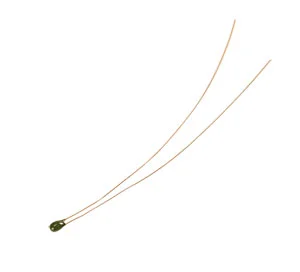What Is A Thermistor And What Does It Do?
TL;DR – Quick Summary
A thermistor is a temperature-sensitive resistor whose electrical resistance changes in response to temperature. There are two main types:
- NTC (Negative Temperature Coefficient) – resistance decreases as temperature rises.
- PTC (Positive Temperature Coefficient) – resistance increases as temperature rises.
Thermistors are small, inexpensive, and widely used in electronics, appliances, automotive systems, industrial equipment, and scientific instruments. They offer good sensitivity and stability but are less accurate at high temperatures compared to thermocouples or resistance thermometers.
Introduction
If you want to understand what a thermistor is, how it works, its applications, and the differences between NTC and PTC types, you’re in the right place. This guide explains everything clearly, from the basic principles to practical uses, so both technical experts and non-technical readers can follow along.
What Is a Thermistor?
A thermistor (short for thermal resistor) is a temperature-dependent resistor made from semiconductor materials. Its resistance changes significantly with even small changes in temperature, making it ideal for precise temperature measurement and control.
Unlike standard resistors, thermistors are highly sensitive to temperature variations. They are manufactured from sintered metal oxides such as manganese, cobalt, nickel, or titanium compounds, and are coated with epoxy or glass for durability.

Appearance and Construction
Thermistors are small, discrete components, often resembling resistors or capacitors. They come in bead, disk, or cylindrical shapes and are encapsulated for protection against moisture, mechanical damage, and chemical exposure.
How Does a Thermistor Work?
A thermistor’s resistance changes based on temperature:
- NTC Thermistors – Resistance decreases as temperature increases.
- PTC Thermistors – Resistance increases as temperature increases.
This relationship is non-linear, meaning the change forms a curve rather than a straight line when plotted on a graph. The exact shape of the curve depends on the materials used and the thermistor’s design.
NTC Thermistors in Detail
- Function: Resistance drops with rising temperature.
- Material Constant (β value): Defines how sharply resistance changes over a given temperature range.
- Advantages: High sensitivity; ideal for precise temperature monitoring in devices such as digital thermometers, automotive sensors, and household appliances.
PTC Thermistors in Detail
- Function: Resistance rises with increasing temperature.
- Materials: Polycrystalline ceramics with added dopants to adjust conductivity.
- Applications: Commonly used as self-regulating heaters and in overcurrent protection.
- Operating Range: Most have a transition temperature between 60°C and 120°C, though special versions range from 0°C to 200°C.
Common Applications of Thermistors
Thermistors are used in:
- Consumer Electronics: Digital thermometers, fridges, ovens, air conditioners.
- Automotive Systems: Measuring coolant and oil temperatures.
- Industrial Equipment: Process monitoring in harsh environments.
- Scientific Research: Laboratory temperature control and stability detection.
- Outdoor Sensors: Weather stations and biological monitoring.
Thermistor vs Thermocouple
| Feature | Thermistor | Thermocouple |
|---|---|---|
| Cost | Low | Higher |
| Accuracy | High at low/medium temps | Good across wide range |
| Temp Range | Typically < 100°C | Up to > 1000°C |
| Stability | Very stable long-term | May drift over time |
Advantages of Thermistors
- Low cost, ideal for mass production.
- High sensitivity to small temperature changes.
- Simple wiring – usually only two connections.
- Less affected by lead resistance than other sensors.
Disadvantages of Thermistors
- Limited accuracy compared to RTDs or thermocouples.
- Highly non-linear, especially above 100°C.
- Require an external voltage source.
How to Test a Thermistor with a Multimeter
- Set the multimeter to measure resistance (Ω).
- Connect the probes to the thermistor’s leads.
- Apply heat (e.g., hot air gun).
- Observe changes:
- NTC: Resistance decreases smoothly.
- PTC: Resistance increases smoothly.
- Faulty thermistors will show no change, zero reading, infinity, or erratic jumps.
FAQ – Frequently Asked Questions
Q1: Can thermistors measure very high temperatures?
No. They are best suited for temperatures under 100°C, although specialised models can go higher.
Q2: Why choose a thermistor over a thermocouple?
They’re cheaper, more sensitive to small changes, and more stable for long-term low- to mid-range temperature monitoring.
Q3: Do thermistors need calibration?
Yes, for precise measurements, especially in scientific or industrial applications.
Q4: Are thermistors waterproof?
Standard thermistors are not, but encapsulated or probe-mounted versions can be waterproof.
Q5: Can a thermistor be repaired?
No. A failed thermistor must be replaced.
If you want to order a temperature sensor or you are unsure exactly what you need, get in touch and we can help you.

